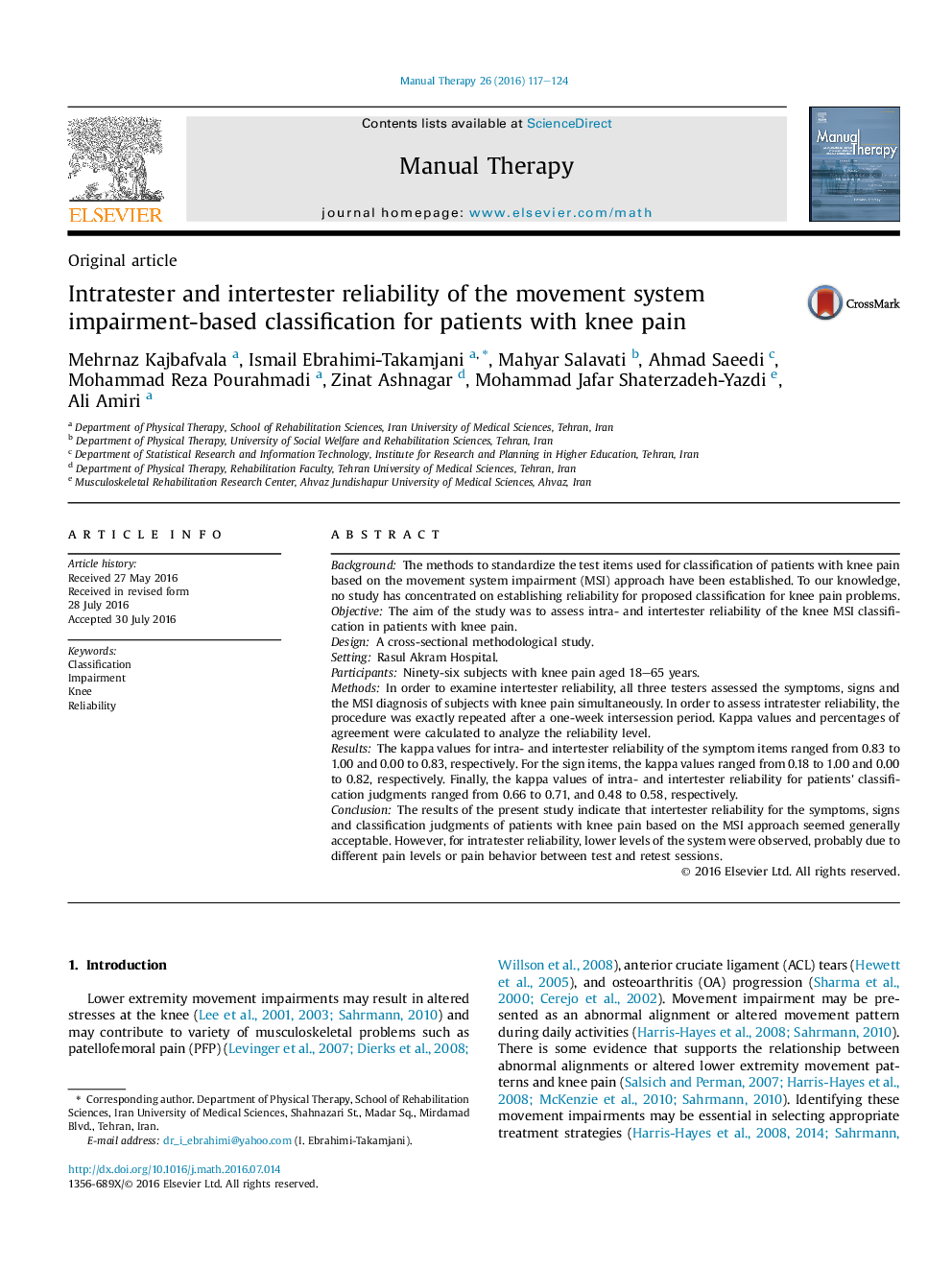| Article ID | Journal | Published Year | Pages | File Type |
|---|---|---|---|---|
| 2624789 | Manual Therapy | 2016 | 8 Pages |
•Kappa values and percentages of agreement were used to assess reliability levels.•Lower intratester versus intertester reliability of the MSI system were observed.•The reliability of the MSI classification assignments were showed acceptable.•MSI classification is recommended for the diagnosis of people with knee pain.
BackgroundThe methods to standardize the test items used for classification of patients with knee pain based on the movement system impairment (MSI) approach have been established. To our knowledge, no study has concentrated on establishing reliability for proposed classification for knee pain problems.ObjectiveThe aim of the study was to assess intra- and intertester reliability of the knee MSI classification in patients with knee pain.DesignA cross-sectional methodological study.SettingRasul Akram Hospital.ParticipantsNinety-six subjects with knee pain aged 18–65 years.MethodsIn order to examine intertester reliability, all three testers assessed the symptoms, signs and the MSI diagnosis of subjects with knee pain simultaneously. In order to assess intratester reliability, the procedure was exactly repeated after a one-week intersession period. Kappa values and percentages of agreement were calculated to analyze the reliability level.ResultsThe kappa values for intra- and intertester reliability of the symptom items ranged from 0.83 to 1.00 and 0.00 to 0.83, respectively. For the sign items, the kappa values ranged from 0.18 to 1.00 and 0.00 to 0.82, respectively. Finally, the kappa values of intra- and intertester reliability for patients' classification judgments ranged from 0.66 to 0.71, and 0.48 to 0.58, respectively.ConclusionThe results of the present study indicate that intertester reliability for the symptoms, signs and classification judgments of patients with knee pain based on the MSI approach seemed generally acceptable. However, for intratester reliability, lower levels of the system were observed, probably due to different pain levels or pain behavior between test and retest sessions.
